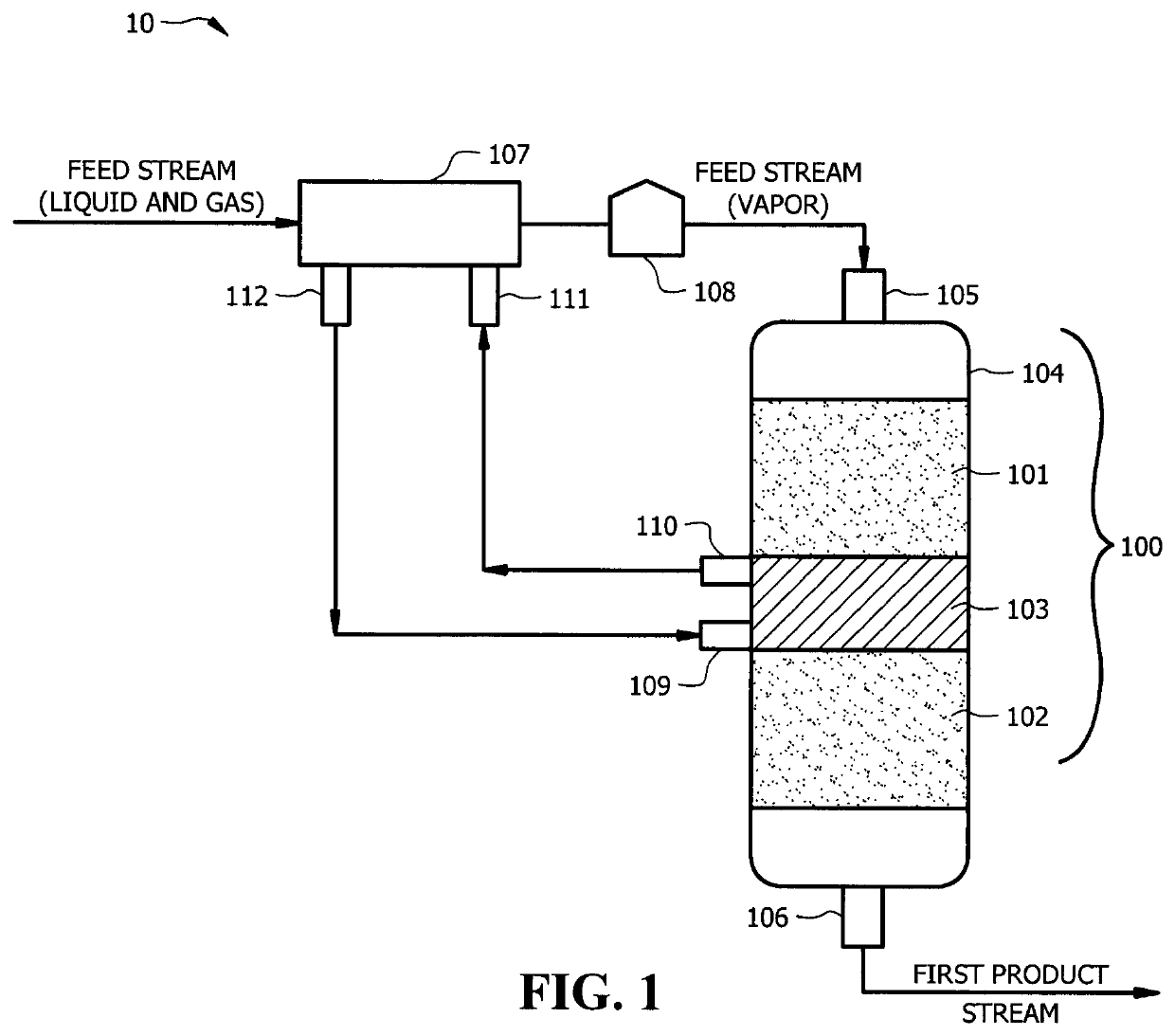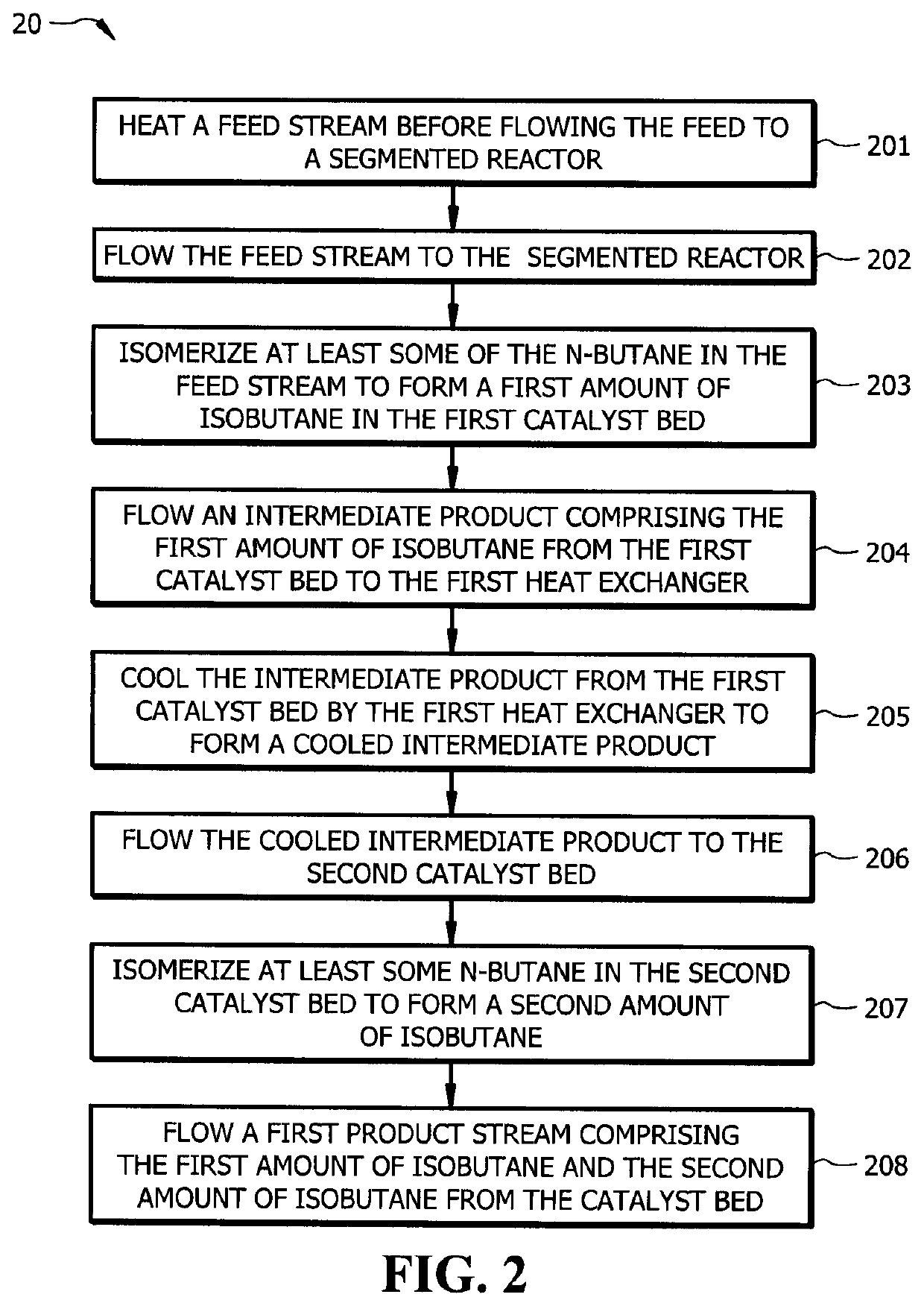Systems and methods for converting n-butane to iso-butane
a technology of isomerizing systems and methods, applied in chemical apparatus and processes, chemical/physical processes, organic chemistry, etc., can solve the problems of high equipment cost and operating cost of isomerizing n-butane using the conventional system, complex process control of these systems, and high equipment cost and operating cost, so as to improve process control and process optimization, reduce equipment costs, and eliminate the effect of high cos
- Summary
- Abstract
- Description
- Claims
- Application Information
AI Technical Summary
Benefits of technology
Problems solved by technology
Method used
Image
Examples
Embodiment Construction
[0026]A method has been discovered for isomerizing n-butane to form isobutane. A segmented reactor comprising a first catalyst bed, a second catalyst bed, and a first heat exchanger is used for the isomerization reaction. In embodiments of the invention, a heat exchanger is disposed between the first catalyst bed and the second catalyst bed. By using this heat exchanger to extract heat from an intermediate product flowing from the first catalyst bed to the second catalyst bed, process control and process optimization can be improved, and the equipment costs can be reduced, compared to conventional methods that require the use of several heat exchange trains at the outlet of each of two serial reactors.
[0027]With reference to FIG. 1, a schematic diagram is shown of segmented reactor system 10. In embodiments of the invention, segmented reactor system 10 may be used for isomerizing n-butane to form isobutane. As shown in FIG. 1, segmented reactor system 10 may comprise segmented react...
PUM
| Property | Measurement | Unit |
|---|---|---|
| temperature | aaaaa | aaaaa |
| temperature | aaaaa | aaaaa |
| temperature | aaaaa | aaaaa |
Abstract
Description
Claims
Application Information
 Login to View More
Login to View More - R&D
- Intellectual Property
- Life Sciences
- Materials
- Tech Scout
- Unparalleled Data Quality
- Higher Quality Content
- 60% Fewer Hallucinations
Browse by: Latest US Patents, China's latest patents, Technical Efficacy Thesaurus, Application Domain, Technology Topic, Popular Technical Reports.
© 2025 PatSnap. All rights reserved.Legal|Privacy policy|Modern Slavery Act Transparency Statement|Sitemap|About US| Contact US: help@patsnap.com


